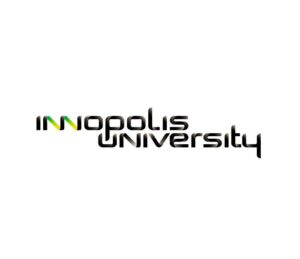
Course: LANGUAGE & PERCEPTION
by Gianfranco Basti, Joseph Brown, Giancarlo Succi
Classes of Prof. Gianfranco Basti
Bibliography of the Classes of Prof. Basti
- Abramsky Samson and Tzevelekos Nikos, “Introduction to categories and categorical logic,” in New structures for physics. CLASS Notes in Physics, 813, B. Coecke, Ed., Berlin-New York, Springer, 2011, pp. 3-94 (pdf)
- Barbieri Marcello, “Biosemiotics: a new understanding of life”, Naturewissehschaften, 2008, DOI 10.1007/s00114-008-0368-x(pdf).
- Basti Gianfranco, Philosophy of nature and of science, vol. I: the foundations, Lateran University Press, Rome, 2011 (pdf)
- Basti Gianfranco, “Intelligence and reference. Formal ontology of the natural computation. In: Computing Nature, Gordana Dodig-Crnkovic and Raffaela Giovagnoli (Eds.), Springer-Verlag, Berlin Heidelberg, 2013, pp. 139-159 (Sapere, 7).
- Basti Gianfranco, “The Post‐Modern Transcendental of Language in Science and Philosophy”. In: Epistemology and Transformation of Knowledge in Global Age, Zlatan Delic (Ed.), InTech, London, 2017, pp. 35-62 (pdf)
- Basti Gianfranco, The quantum field theory (QFT) dual paradigm in fundamental physics and the semantic information content and measure in cognitive sciences”, In: Representation and Reality in Humans, Other Living Organisms and Intelligent Machines, Dodig-Crnkovic, Gordana and Giovagnoli, Raffaela (Eds.), Springer International Publishing, Berlin-New York, 2017, pp. 177-210 (pdf).
- Basti Gianfranco, «From formal logic to formal ontology. The new dual paradigm in natural sciences», in
(Un-)Certainty and (In-)Exactness. Proceedings of the Ist Colloquium on Philosophy and Formal Sciences, a cura di Fabio M. Bertato e Gianfranco Basti , Campinas UP & Aracne Edizioni , Campinas-Rome, 2018, pp. 63-108 (pdf) - Basti, Gianfranco, Capolupo, Antonio, and Vitiello, Giuseppe, “Quantum field theory and coalgebraic logic in theoretical computer science.” Progress in Biophysics and Molecular Biology 130(2017), pp. 39-52 (pdf)
- P. Blackburn, F. J. van Benthem, & F. Wolter (Eds.), Handbook of Modal Logic. Amsterdam: Elsevier, 2007
- Davis martin, The universal computer. The road from Leibniz to Turing, CRC Press, Taylor and Francis Group, Boca Raton, FL, 2012.
- Del Giudice Emilio, “Old and new views on the structure of matter and the special case of living matter”, J. of Physics Conf. Series, vol. 67, (2007) 012006 (pdf).
- Freeman Walter and Vitiello Giuseppe, “Nonlinear brain dynamics as macroscopic manifestation of underlying many-body field dynamics”, Physics of Life Reviews, vol. 3, no. 2, pp. 93-118, 2006 (pdf)
- Goranko, V., & Otto, M. “Model theory of modal logic”. In P. Blackburn, F. J. van Benthem, & F. Wolter (Eds.), Handbook of Modal Logic. Amsterdam: Elsevier, 2007, pp. 225-331.
- Hameroff Stuart, “How quantum brain biology can rescue conscious free will”, Frontiers in Integrative Neuroscience 6, 2012, 93 (pdf).
- Hansson, Sven Ove, Hendricks, Vincent F. (Eds.), Introduction to formal philosophy, Springer, Berlin-New York, 2018.
- Huges, G. E., Cresswell, M. J.; A new introduction to modal logic, Routledge, London, 1986
- Nagel Ernst, Newmann James R., Goedel’s Proof. Revised edition, New York UP, New York, 2011.
- Levy Neil, Neuroethics: challenges for the 21th century, Cambridge UP, Cambridge, 2009
- Deutsch David, “Quantum theory, the Church-Turing principle and the universal quantum computer”, Proc. Royal Soc. A, 400(1985), 97-117.



